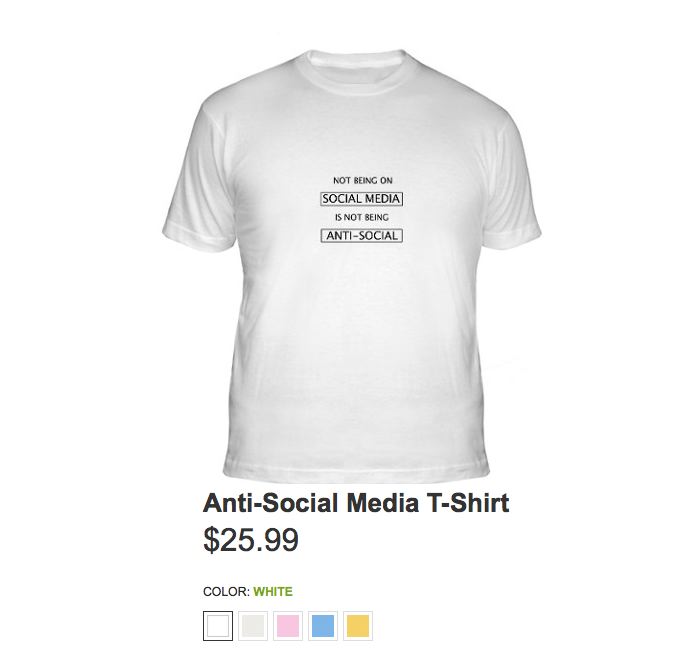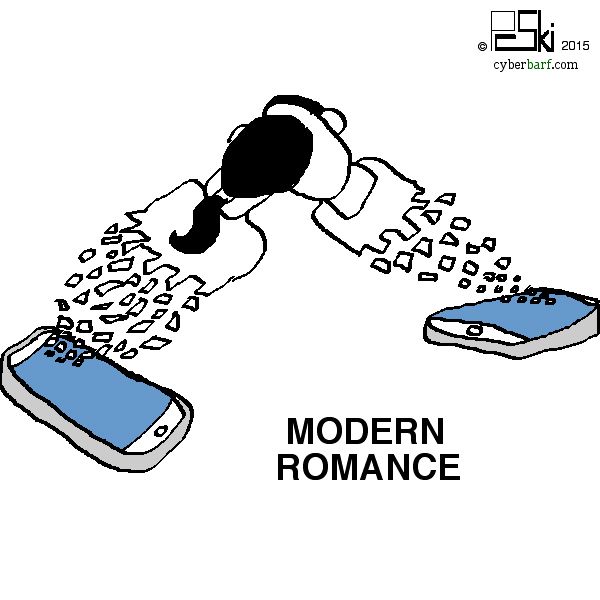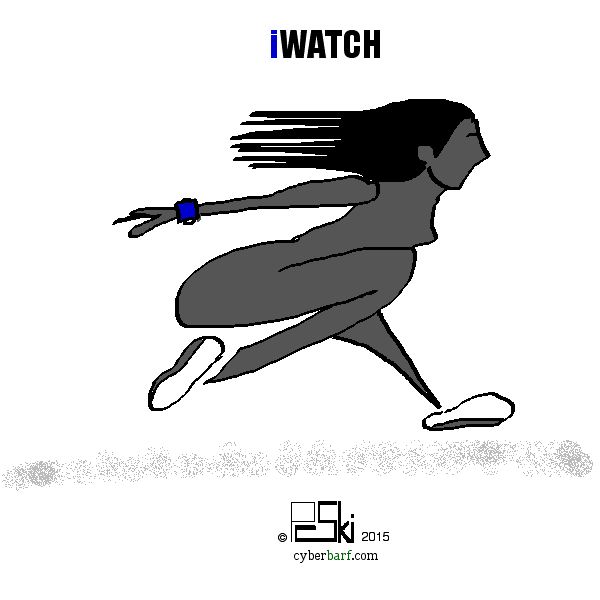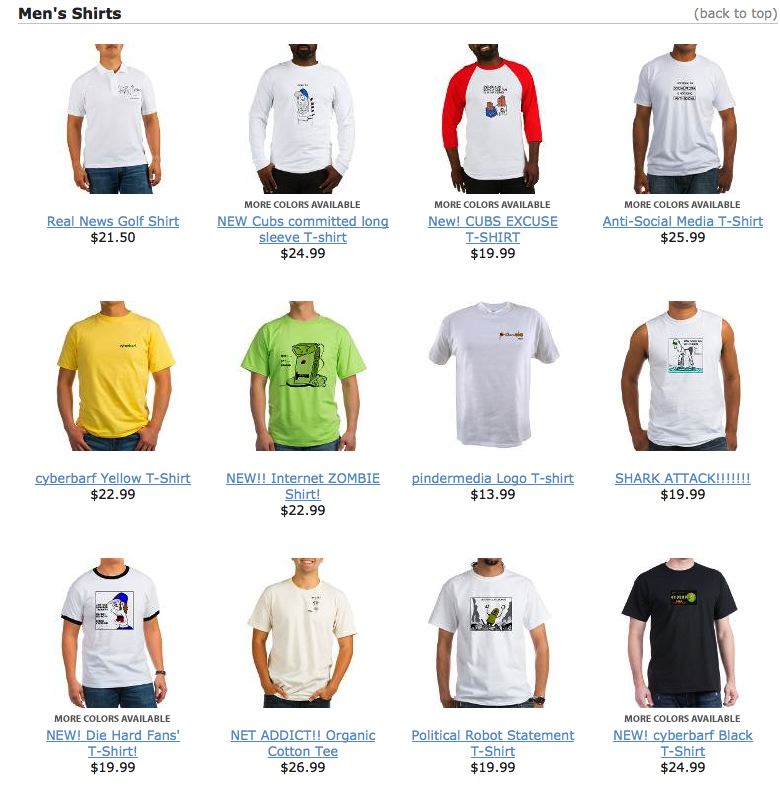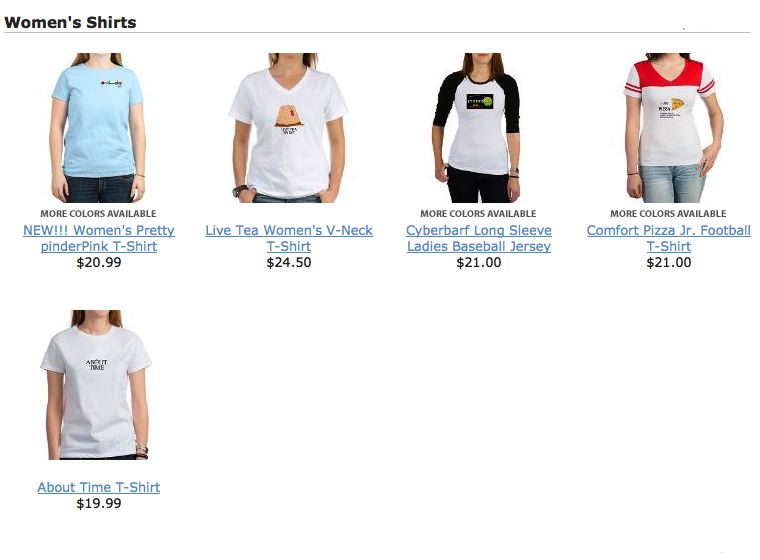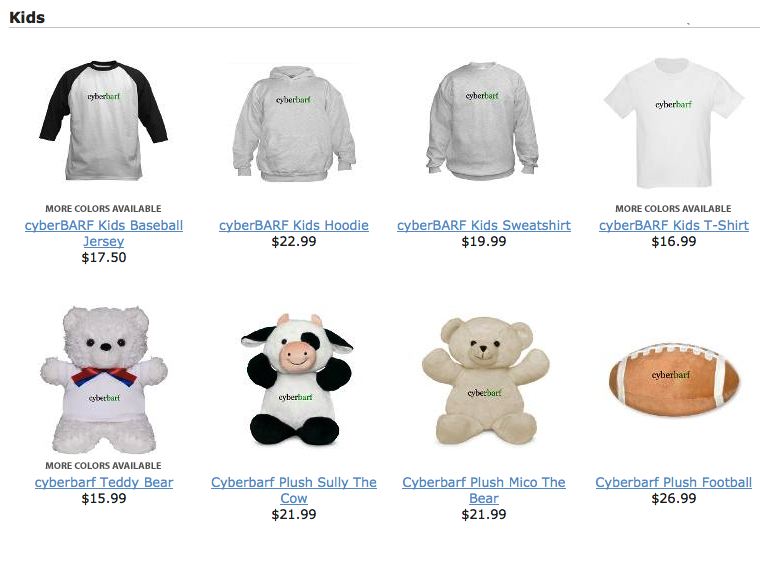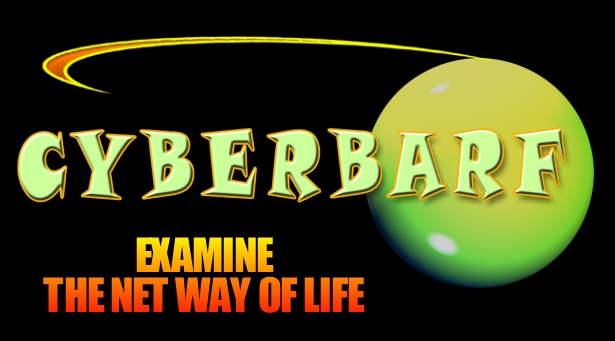|
LADIES' JAMS MULTIPLE STYLES-COLORS $31.99 PRICES TO SUBJECT TO CHANGE PLEASE REVIEW E-STORE SITE FOR CURRENT SALES "It is the malady of our age that the young are so busy teaching us they have no time left to learn." - - - Eric Hoffer
PRICES SUBJECT TO CHANGE; PLEASE CHECK STORE THANK YOU FOR YOUR SUPPORT! |
cyberbarf VOLUME 14 NO.11 EXAMINE THE NET WAY OF LIFE JUNE, 2015 NOT LOST BUT FOUND iTOONS UP PERISCOPE ON THE VERIZON WHETHER REPORT HOLLYWOOD AND VINE
NEW REAL NEWS KOMIX! SHOW HACK!
©2015 Ski All Rights Reserved Worldwide Distributed by pindermedia.com, inc.
NOT LOST BUT FOUND ON THE INTERNET
1980s icon Max Headroom resurfaced on the internet this year in an advert in the UK. Max was aged in the spot by 30 years, but since he was originally a person translated as data would he actually age in cyberspace? As Ski has written for decades, his Max Headroom thesis (that everything in the series has or will come true) still holds true. The Internet has turned everyone into data, real time interactive social media posters and now individual broadcast stations through their phone cameras. |
|
cyberbarf.com EXAMINE THE NET WAY OF LIFE
iToons
cyberbarf UP PERISCOPE CYBERCULTURE Periscope is a new phone app which allows a user to live stream video to their “followers.” It basically puts live content from an average person as producer to a potential world wide audience. The cost of distribution is really a person's data plan. Many cable companies are upset by this move. First, it is potential entertainment fad that could blow past YouTube or Vine since a live broadcast eliminates editing and upload cost and time issues. Second, cable's main bread and butter content providers, professional sports, believe that Periscope and similar apps will violate their copyrighted game broadcasts. There will be a legal morass on that position. Periscope could be used to live stream a child's tee ball game to his grandparents. This is a noncommercial personal use of the technology. However, sports teams and leagues have seen fans sitting in their venues live streaming the game to their friends. The teams think that this undermines gate attendance (less ticket sales) and commercial broadcast viewers (and ratings for advertising). This throws technology under the microscope. Is Periscope more like a VCR, a piece of equipment that has “legal” uses and applications. Broadcasters fought to have VCR manufacturers pay blanket royalties for potential copyright infringement claims? But the court rules against such speculative damages. The courts also ruled that end consumers had a right to “time shift” programs broadcast to their homes without infringing on the show's copyrights even though a “copy” of the program was stored on a video tape to be accessed at a later time. Consumers were found to have a fair use right to time shift their programs for home use. Of is Periscope more like the piracy sites like Torrent or Napster which are taking a program and redistributing it without the consent of the broadcasters. The problem with this argument is that a Periscope user is not uploading a tangible copyrighted program through the phone network to his end users. If you record a TV show, then release a copy on the Internet (or through a streaming app) there would be a copyright violation because you are using someone else's creative content without paying for it. This rebroadcast is the infringement. But if a fan is sitting in his seat and holding his camera phone to the action, that is not pirating the team's broadcast. The fan's angle, the commentary and edits or camera movements are created by the Periscope user not the team or television station. The real issue then would be more a contractual one. A fan at a sporting event buys a ticket, a license to view the event. As part of that license (permission) is a restriction on what a fan can do inside the stadium. Most teams allow fans to bring their cameras to take pictures of the action (for noncommercial, personal use). Does a live picture fall within that exception, or does a Periscope user violate "any rebroadcast or retransmission of the game is strictly prohibited." And if a ticket stub prohibits fan live streaming the game, is that covenant enforceable by a court? If there is a noncommercial use by the Periscoper, does the team have any actual damages? Or could it be argued that the team is actually getting free publicity from its fans? More and more broadcasters are encouraging fans and viewers to become interactive in the broadcasts. Some ask viewers to Tweet questions to their broadcasters. Teams are looking for fan photos to show on broadcasts. Does this social media requests by teams send the wrong message to Periscope users? Is this a possible permission for fans to use any social media device to document their fan experience? Sports leagues will litigate because the multi-billion dollar network broadcast rights could be undermined by free public streaming of the games (especially out of town games which are sold in expensive seasonal cable sports packages). Cable companies are seeing that the only remaining “must see TV” is live events like sports contests. Every other form of entertainment can be taped, time shifted, viewed on demand, or viewed on the Internet (Netflix or the network's own web pages). If cable is to survive, it needs to guard its live events against dilution since public streaming of sports does not include the team's commercial advertisers. Beyond the legal ramifications of a new application, Periscope and other personal live broadcasting programs can change the leisure space. Kids with too much time on their hands no longer need a camcorder and a laptop with movie editing programs to fashion 6 second Vine videos or three minute YouTube programs. Now, kids can just click and point their phones at their subject matter (including their goofy selves) and you have a show. There is a young demographic that is more drawn to the technology rather than the quality of the content. They realize that the Vine space is not their parents' domain. This is their new playground. And that what worries the adults who are looking to monetize the tween demographic. Periscope was acquired for $100 million. It will need to insert itself (and a revenue source such as mobile ads) into a live broadcast stream. It is possible, but such content control could be enough to have copyright holders claim an active infringement of a program, as the fight promoters of the recent high profile Mayweather fight have contended when viewers began live streaming the fight to friends/followers for free. But some big media outfits, such as cable news broadcasters, may adopt the Periscope technology to bring live broadcasts of news events by their reporters (without the need of a camera crew.) Of course, anything that can be filmed will find itself blasted through the digital world including live Vine segments to live family vacation movies. As desk top publishing and blogging made everyone writers; YouTube made everyone a comedian; Periscope now turns everyone into potential broadcasters. |
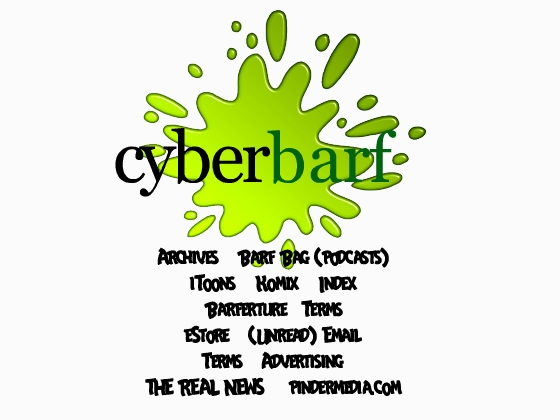 |
Come on, explore the Site Archives! Find the missing links and error messages! Ha! |
|
cyberbarf EXAMINE THE NET WAY OF LIFE
cyberbarf ON THE VERIZON ARTICLE How the old dial up service AOL turned into the hot high school girlfriend passed around the football team is still hard to grasp. The latest player for the old gal is Verizon, who announced it was purchasing AOL for $4.4 billion. AOL had the 2000 $183 billion expensive marriage to Time Warner, which led to a financial disaster for TW. When the dot.com bubble burst, AOL had little value so TW discarded its partner in 2009. AOL has floated about the fringes of the Internet, trying to be a content producer (with hits and misses like micro-citizen journalism in Patch which failed), aggregator and old basic web access provider (ISP/email accounts). Ironically, Time Warner is now being acquired by Charter Cable in a $78 billion deal. Time Warner's merger attempt with the biggest cable operator, Comcast Universal, was blocked on antitrust concerns. The new Charter Time Warner would be the second biggest cable company behind Comcast. In addition to the added subscriber base, executives said the driving force for this merger was to expand the company's broadband assets. To some, this move makes sense since broadband is the Internet highway. But more than a few people were scratching their heads on the AOL deal. What is on the horizon for Verizon to purchase AOL which had faded from the forefront of new technology. Verizon said in a statement that the US's second-largest mobile carrier was acquiring a platform for growth in the online video market, strengthening the service that it intends to launch this summer. Verizon has yet to provide much detail about the online video service itŐs planning, but company executives have said it will combine a mixture of paid-for and ad-supported content. But analysts think the acquisition would also give Verizon coveted technology that AOL has developed for placing online ads, which now accounts for the bulk of AOL's value. Verizon said the acquisition “further drives its LTE wireless video and OTT (over-the-top video) strategy” and “will also support and connect to VerizonŐs IoT (Internet of Things) platforms, creating a growth platform from wireless to IoT for consumers and businesses.” Verizon has been trying to reposition its business away from the landline customer tether. Landline telephone and cable wire is seen as stagnant to falling markets. Verizon sees the future in mobile wireless businesses. But every home and business still needs a high speed wire to connect to the Internet The control of “the last mile” of that physical connection is still an important component in digital communications. The old telecoms spent a fortune to build out the high speed fiber networks to meet the potential growth of bandwidth for more channels and video streams. It is hard to imagine that these communication giants would abandon their new expensive network infrastructure to spend even more capital to build a high speed wireless network. Besides, the average family has several tablets, a big screen HD-TV and personal wi-fi router to keep the peace. There will have to be some convincing that the family needs to move away from the comfort of their own secure home equipment to jump into the cross current streams of public hot spots. Engadget, an AOL site, speculated that Verizon's underlying CDMA network will hang around for “Internet of things” devices (think appliances, cars and machinery), which need only “small bursts” of data to communicate. The newer LTE network is still top priority - - - eventually, all of Verizon's cellphones will depend on it - - - but it won't completely replace the older technology for quite some time. The “Internet of things” is this year's new business buzzword. Futurists think that people will want to control their appliances, utility and tools by remote control through the Internet or their mobile phone app. Early applications include home alarm systems, climate control programming and appliance timers (such as starting a coffee maker brew times). The next stage to manufacturer “smart appliances” such as refrigerators that scan the food expiration dates then send notifications or shopping lists when the product is gone or past its freshness date. Huffington Post, Engadget, and TechCrunch are AOL brand sites. These brands may be the face of the current AOL business, but it is questionable whether those editorial business contribute to the bottom line. AOL's old legacy subscription business is still highly profitable, a carry over from the dial-up days when it mailed people CD-ROMS and introduced the public to the Internet But AOL's fastest growing business is in advertising technology, and that is what Verizon wants to leverage on its other platforms. The irony of the acquisition of the AOL editorial content is that those sites have been vocally positive on net neutrality rules, while Verizon is vehemently in opposition to the new FCC powers and rules. Cynics think Verizon may have been buying AOL to help silence some of its critics, but realists think Verizon's motivation is purely profit centric: advertising technology and growth into new communication markets. Most people believe that Verizon will sell off assets such as the editorial brands since it does not need them to focus on mobile advertising. There are bigger fish to fry than running content sites. Verizon has made plans to launch its own streaming video service this summer, focusing on delivering video to mobile devices and perhaps going over the top into your living room. As Verizon CEO Lowell McAdam said in a press release on the AOL purchase, his company has been “strategically investing in emerging technology, including Verizon Digital Media Services and OTT, which taps into the market shift to digital content and advertising. AOL's advertising model aligns with this approach, and the advertising platform provides a key tool for us to develop future revenue streams.” AOL has created a real-time bidding platform that helps marketers buy space for their display and video ads on digital properties across the web. The Verge reported that the biggest growth from 2011 to 2014 was third party ad placement revenue (from $380 million to $800 million) while AOL's own site and search advertising businesses have peaked in narrow revenue ranges. Opinion is that integrating AOL Verizon will become a global media player, extending its reach to hundreds of millions more people than it could in its current business. Verizon is acquiring millions of new customers at a much lower cost than trying to acquire a different network provider or starting its own new competitive business. Verizon as a mobile operator and cable company,but it already has a large business in mobile advertising and it helps marketers to target various demographics. And it is the cross platform information gathering that has alarmed some privacy experts. The National Journal spoke with privacy and consumer advocates about the merger “Whether or not the combination of a major online advertiser with the largest mobile-services provider raises substantial antitrust concerns, it raises extremely substantial and urgent privacy concerns,” Harold Feld from consumer advocacy group Public Knowledge. “Verizon has already shown an alarming tendency to harvest private information from subscribers to bolster its foray into online advertising.“ Jeff Chester, of the Center for Digital Democracy, said that there are “disturbing privacy issues here as Verizon integrates its massive customer database into AOLŐs cutting-edge digital data-targeting system.” Jonathan Mayer, a researcher at Stanford, told the National Journal that, “Verizon appears to be tearing down the wall between telecommunications and personalized advertising.“ He believes that companies like Verizon are “in a privileged and trusted position” because of how much data (i.e. literally everything you do online) flows through their networks. Since the public is now aware that it is possible for megadata to be collected and analyzed (through the NSA disclosures), there is no technological barrier for private companies to do the same thing. Private companies can easily cross reference their customer data bases to have algorithms to target advertising at them. This targeted advertising based on personal demographics is highly prized by advertisers who get better bang for their advertising buck. The merger will have to go through Justice Department review, as well as FTC and FCC considerations on whether it will be harmful to consumers. Consumers are looking for faster and cheaper Internet access. Consumers are looking for faster and more stable wireless networks. Consumers are looking for faster and cheaper streaming services. The Verizon-AOL combination does not directly address any of those consumer issues. But Verizon executives have a vision that the next stage of consumer communication is going to push aside the old telecom models. It wants to be in the forefront of this change. |
|
cyberbarf THE WHETHER REPORT |
cyberbarf STATUS |
| Question: Whether social media like Facebook has taken the place of office workers small talk? |
* Educated Guess * Possible * Probable * Beyond a Reasonable Doubt * Doubtful * Vapor Dream |
| Question: Whether the projected first year sales 36 million units for Apple's Watch going to be seen as a successful product? |
* Educated Guess * Possible * Probable * Beyond a Reasonable Doubt * Doubtful * Vapor Dream |
| Question: Whether politicians will push for more election speech restrictions prior to the 2016 presidential election? |
* Educated Guess * Possible * Probable * Beyond a Reasonable Doubt * Doubtful * Vapor Dream |
|
cyberbarf EXAMINE THE NET WAY OF LIFE cyberbarf HOLLYWOOD AND VINE ESSAY Popularity is still an American cultural foundation stone. Human nature encodes this desire to be liked by people around you. It is an objective value of personal self-esteem, personal worth and outward acceptance to others. Just as Facebook has likes, Twitter has retweets, and Pinterest has pins, the six-second video service Vine has increased the possibility for user popularity contests by having a loop counter on each video. Instead of tracking unique users or known subscribers, the loops track how many times the video has been played on the net. The loops now give Vine stars more ammunition to claim enhanced status. Popularity is also a path to success. Vine is the video app from Twitter that lets people share pieced-together mini mobile videos that are just 6 seconds in length and play on repeat. The app is especially popular with YouTube stars and comedians. It has an estimated fan base of more 40 million users. Since it debuted in 2013, Vine has quickly changed from a quirky video app into a video social network. Twitter has introduced a messaging component to give people a way to exchange private video or text messages. The new entrepreneurial entertainers have found that in order to build an audience, they need to build a wide net across multiple social media outlets: Pininterest for women, Facebook for older men and women, Twitter for interactive content, YouTube videos for youth, and Vine for tweens. Once a person becomes established with a following in this new media, he or she can leverage it an actual paying job in the old entertainment business. Hollywood has grasped the concept of finding talent in unusual places. The 1990s television scene was a glut of comedy club finds thrown into retread situation comedies. The 2010s may be viewed as the glut of YouTube and Vine stars pollinating the old TV formats. The snarky clip show like Talk Soup, or Tosh.0 follow the short blast format of YouTube shows or Vine one-liner goofiness that appeals to a younger audience. Hollywood studios have to take note of the new media entertainment. The critically acclaimed show, Mad Men, only drew 3 million viewers. There are some goofy kids with a camcorder posting nonsense who can draw 20 million views on YouTube. What passes as entertainment on the web may be baffling to industry executives and traditional viewers. Studies have shown that younger viewers consume more than a third of their entertainment on-line. A study commissioned by Variety measured the Q scores, a media industry gauge of familiarity and appeal, of YouTubers and traditional stars among US teens aged 13 to 17. On-line video stars Smosh ranking No. 1, ahead of celebrities such as actress Jennifer Lawrence and singer Katy Perry. Anthony Padilla and Ian Hecox, known as Smosh, have amassed more than 4 billion views of videos on their Smosh channel. Young people apparently put more stock in stars like Smosh than in big-name celebrities even though YouTube or Vine content will look more and more like that kid clowning in front of a laptop camera. But there is something empowering about creating in the new media. CNet reported that YouTuber Andrea Russett an Indiana teen who kept her videos a secret from her classmates for fear of being teased, has millions of followers who chase her down the street like Britney Spears. The 19-year-old has collected 2 million subscribers over six years of video blogging, or vlogging. When she moved to L.A. after turning 18, her YouTube clips of teen-life opinions and high jinks reeled in sponsorships from Pizza Hut and Sour Patch Kids. “This is our business,” Russett says of the vlogs she creates. How successful vloggers are is hard to quantify. Beauty vlogger Michelle Phan started posting makeup tutorials in 2007. She has expanded her expertise and status into a product sales company, with estimated annual sales of $120 million. But Phan is probably the exception to the rule. The New York Times reported that the real revenue source for YouTube and Vine stars is the microcommercial. Robby Ayala has 2.6 million followers on Vine, posting several daily goofy six-second movies. Niche, a company that wanted to hire him to make a short commercial for GroupMe, a messaging application, and post it for his followers to see. Ayala made a short comedy skit of himself using GroupMe to text his friends a selfie photo. He accepted the job, and others like it, which pay several thousand dollars. Product placement or endorsement to build businesses is how new media stars can make money. Niche has become a talent scouting service and advertising agency rolled up into one: it matches social media stars with marketers and advertisers who want to reach the young users who inhabit those platforms full time. Those users then make content around a company or product, like baby clothes or a sports drink, and post it to their accounts for their followers to like and comment on. This also gives advertising virtually free focus groups. Campaigns through Niche pay a broad range of fees, from $500 to as much as $50,000, but the average payout for a Vine campaign ranges in the mid-four figures. Actual figures are not known, but it is said people posting advertisements on Vine can make six figures a year, and some as much as $300,000. But some YouTube stars admit that they don't do it for the money. Even a star with a million plus following, after expenses, could be netting $20,000 a year (or around the minimum wage). Once YouTube or distributor takes it fee, and expenses such as cameras, talent, editing services, production expenses and income taxes, a star has little left. But many don't do it for the money, per se, but to be part of a larger community. A new creative ecosystem that supports each other. The growth of the vlogger community can be seen in VidCon, the annual convention celebrating the new medium. Traditional entertainment companies scout this event to find new talent. But as buyers, old media companies are still not sure. Executives know about the popularity of YouTube. They try to compare it to the launch of MTV in 1981 or the explosion of cable in the early 1990s. The parallels are there - - - lower production values; smaller, narrower audience - - - and it is even cheaper, even more niche, even less profitable today than cable was then. But the concern is that none of YouTube's stars have really crossed over and landed a big show on Bravo or MTV. (As in our last issue, video star Grace Helbig is trying to move her show to the E! Network as a bit and talk show. Already, her show has moved from its Friday night time slot to late Sunday night which is not a good sign in television.) But digital shows feels like the future. Old movie studios do not want to be left holding the dust like the record labels did when music streaming and new Internet distribution methods undercut their business model. Television and cable networks still have to appeal to broad audiences in order to charge premium ad rates. If advertisers believe that they can get good product response cheaply with product placement to a targeted demographic with a Vine star, they will move their budgets toward the digital shows. Like a wolf pack, the old media executives will follow and track what their advertisers are doing with their budgets. YouTube and Vine stars hope to transition to mainstream celebrity. But getting an audience and keeping it is a full time job. And as popular stars are on-line, the average person on the street would be clueless if asked who were the top Vine stars. For the record, here are some of the 10 most subscribed Vine stars of September 2014: Josh Peck Followers: 5,601,716 Loops: 456,526,885; Rudy Mancuso Followers: 5,810,289 Loops: 1,035,402,478; Jerry Purpdrank Followers: 5,847,862 Loops: 1,350,487,067 ; Cameron Dallas Followers: 6,094,762 Loops: 849,369,479; Alx James Followers: 6,215,374 Loops: 912,042,151 ; Jerome Jarre Followers: 7,326,463 Loops: 770,902,298 ; Brittany Furlan Followers: 7,410,784 Loops: 1,288,339,388 ; King Bach Followers: 8,448,663 Loops: 1,299,765,141 and Nash Grier Followers: 9,589,738 Loops: 1,038,126,059. Source: ReadWrite.com.
|
|
THE PINDERMEDIA STORE IS FULL OF FUN T-SHIRTS CLOTHES, HATS AND OTHER ITEMS. CHECK OUT THE STORE FOR ITEMS
SUPPORT cyberbarf VISIT THE CYBERBARF STORE! Prices and styles may vary depending on sales, allotments, inventory. |
|
BACK IN BLACK WITH THIS CLASSIC CYBERBARF T-SHIRT!
FEATURING: THE REAL NEWS IMPACT EDITORIAL CARTOONS WRIGLEYVILLE WAR POLITICS ENDORPHIN RUSH THE DARK ABYSS RANDOM ELECTRONS SPECIALS
FEATURING: THE REAL NEWS ARCHIVES CARTOONS MADAME'S TEA HOUSE THE BAR EXPLORE THE CITY SCAPE UNDER CONSTRUCTION SURPRISES ESTORE SPECIALS |
NEW THEORIES AND CHARACTER ESSAYS INCLUDING 10 YEAR ANNIVERSARY ARTICLES
cyberbarf
THE STEAM PUNK SPECIAL EDITION featured new Music from Chicago Ski & the (audio) Real News: (mp3/4:14 length)
EXAMINING THE NET WAY OF LIFE cyberbarf™ distributed by pindermedia.com, inc.
|
cyberbarf
Distribution ©2001-2015 pindermedia.com, inc.
All Ski graphics, designs, cartoons and images copyrighted.
All Rights Reserved Worldwide.


